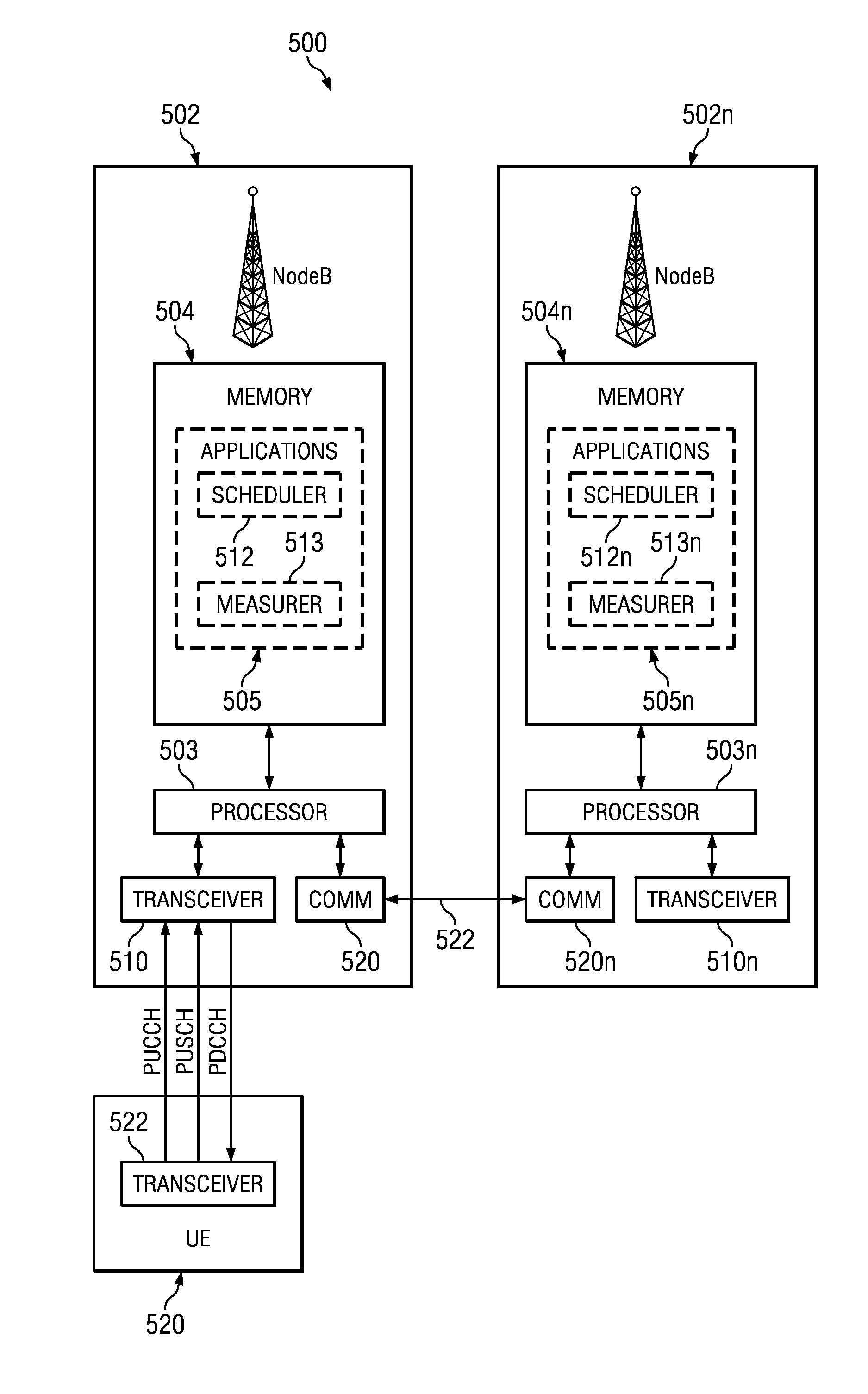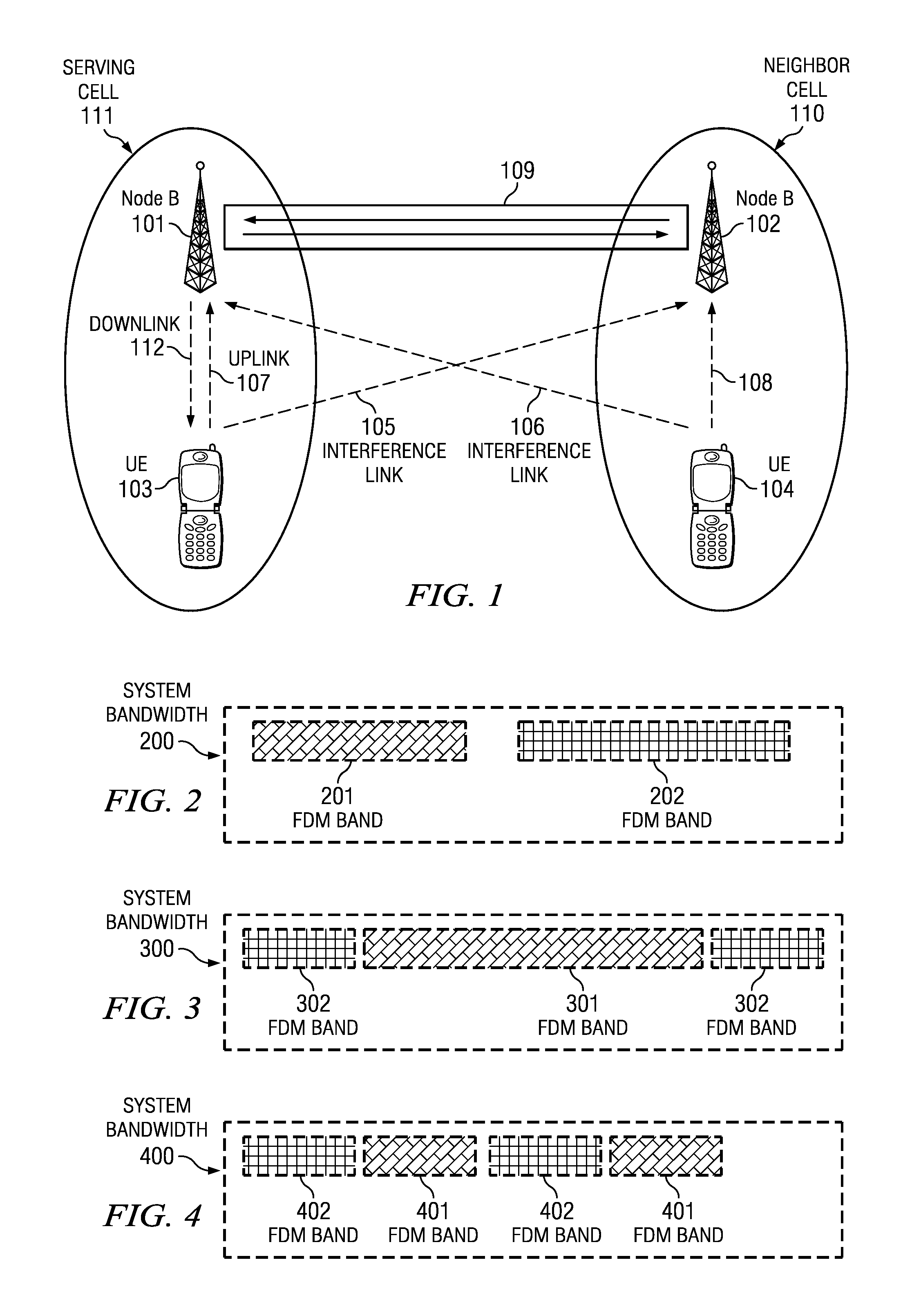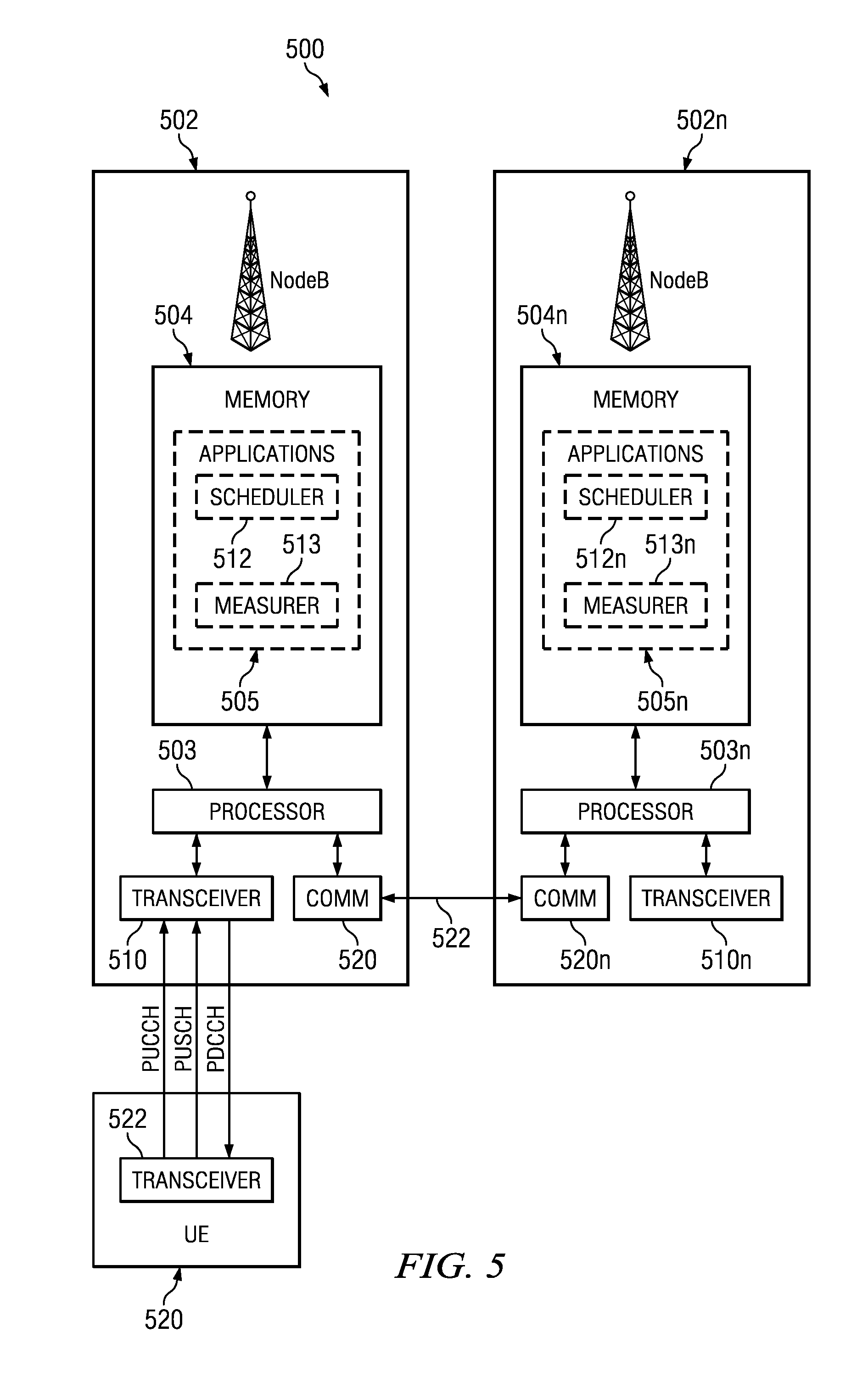Network-based inter-cell power control for multi-channel wireless networks
a multi-channel wireless network and power control technology, applied in the field of wireless frequency division multiplex operation, can solve the problems of interference between signals from different users within the same cell, and the interference of the base station by users
- Summary
- Abstract
- Description
- Claims
- Application Information
AI Technical Summary
Problems solved by technology
Method used
Image
Examples
Embodiment Construction
[0020]Conventional cell control mechanisms do not employ frequency division multiplexing (FDM) band-specific direct information exchange between NodeBs serving different cellular sites. Thus, conventional cell control mechanisms are unable to optimally control and deal with frequency-selective interference which individual UE generates to neighboring cell sites. This feature becomes especially important for any kind of frequency division multiplexing (FDM) access strategies. In contrast, embodiments of the cell control method described herein allow an effective control of inter-cell interference by employing frequency division multiplexing (FDM) band-specific information exchange between NodeBs serving different cellular sites. Consequently, in some embodiments of the invention, UEs which transmit on a specific frequency band can transmit with different power configurations, when compared to UEs which use a different frequency band. In other embodiments, band-specific scheduling inf...
PUM
 Login to View More
Login to View More Abstract
Description
Claims
Application Information
 Login to View More
Login to View More - R&D
- Intellectual Property
- Life Sciences
- Materials
- Tech Scout
- Unparalleled Data Quality
- Higher Quality Content
- 60% Fewer Hallucinations
Browse by: Latest US Patents, China's latest patents, Technical Efficacy Thesaurus, Application Domain, Technology Topic, Popular Technical Reports.
© 2025 PatSnap. All rights reserved.Legal|Privacy policy|Modern Slavery Act Transparency Statement|Sitemap|About US| Contact US: help@patsnap.com



